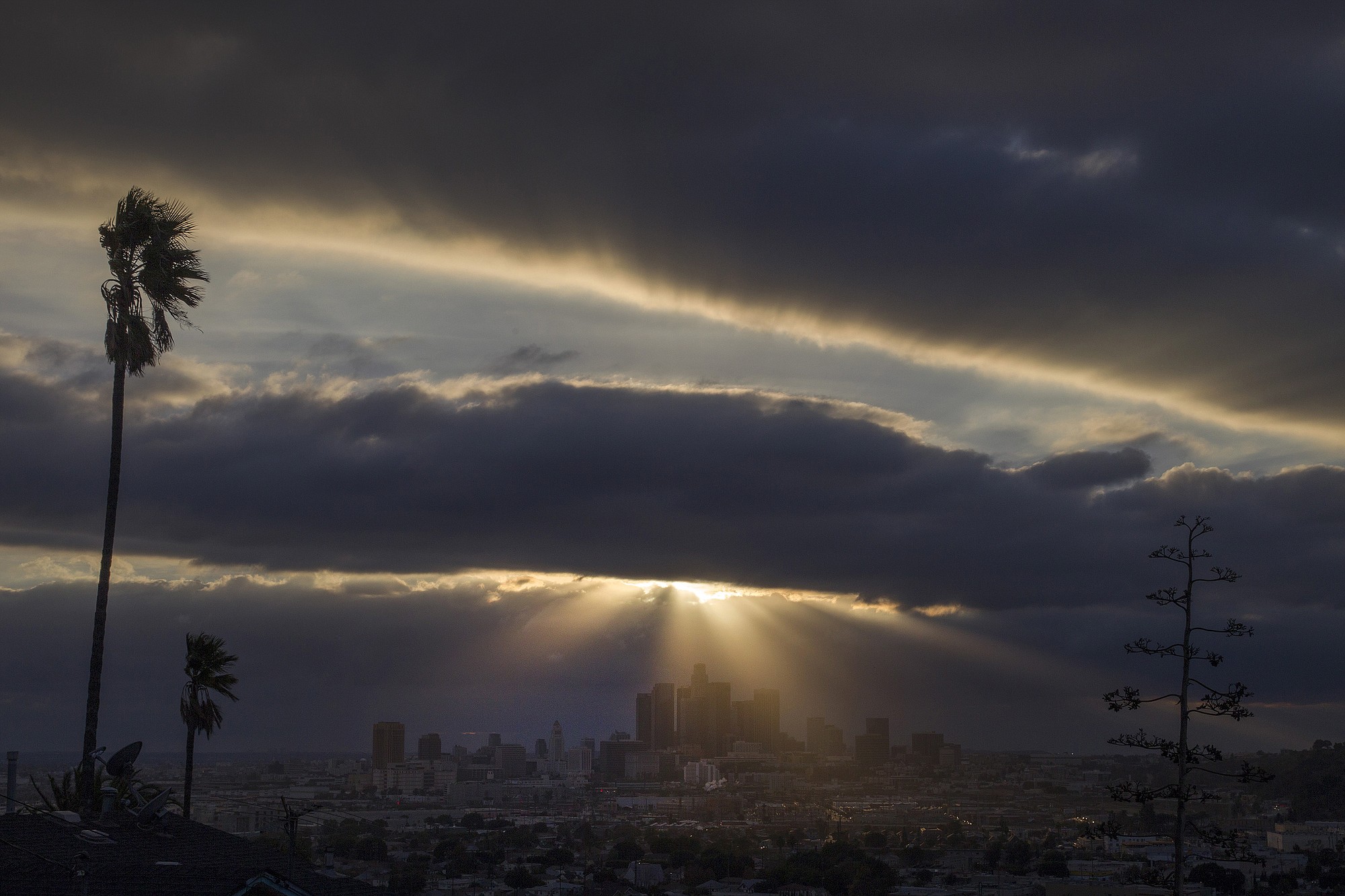LOS ANGELES — California’s drought crept in slowly, but it could end with a torrent of winter storms that stream across the Pacific, dumping much of the year’s rain and snow in a few fast-moving and potentially catastrophic downpours.
Powerful storms known as atmospheric rivers, ribbons of water vapor that extend for thousands of miles, pulling moisture from the tropics and delivering it to the West Coast, have broken 40 percent of California droughts since 1950, recent research shows.
“These atmospheric rivers, their absence or their presence, really determine whether California is in drought or not and whether floods are going to occur,” said F. Martin Ralph, a meteorologist who directs the Center for Western Weather and Water Extremes at the Scripps Institution of Oceanography at the University of California, San Diego.
The storms, which flow like massive rivers in the sky, can carry 15 times as much water as the Mississippi and deliver up to half of the state’s annual precipitation between December and February, scientists say. Though atmospheric rivers are unlikely to end California’s drought this year, if they bring enough rain to erase the state’s huge precipitation deficit, they could wreak havoc by unleashing floods and landslides.
Scientists using a new type of satellite data discovered atmospheric rivers in the 1990s, and studies since then have revealed the phenomenon’s strong influence on California’s water supply and extreme weather.
This month, a group of government and university scientists, including Ralph, are launching a major field experiment to better understand atmospheric rivers as they develop over the Pacific. Through the end of February, some researchers will fly airplanes above storms as they pass through, while others will monitor them from ships hundreds of miles off California. As the storms make landfall, the scientists will collect data with ground-based instruments.
“We’re going to measure the heck out of them,” Ralph said.
Scientists will use the information to try to improve atmospheric river forecasts, including where they will hit hardest and for how long. That could help communities prepare for flooding and allow water managers to make better use of storm runoff.
California usually needs about five good atmospheric rivers each winter to fill reservoirs, stimulate spring vegetation growth and build snowpack to healthy levels, said Michael Anderson, a climatologist for the California Department of Water Resources. But how much the storms boost the state’s water supply depends on the characteristics of each one, including how cold it is, whether it makes landfall toward the north or south, and whether the precipitation falls mostly as rain near the coast or as snow in the mountains.
Jay Jasperse, chief engineer for the Sonoma County Water Agency, calls atmospheric rivers “our water supply up in the air.” The agency, which operates two reservoirs in the Russian River Valley, one of the state’s most flood-prone watersheds, has been seeking more precise forecasts to make better decisions about releasing water from reservoirs to accommodate storm runoff or conserving it to use as drinking water.
“We want to better handle these short, intense rainfall events,” Jasperse said.
If atmospheric rivers fail to arrive, California could be in trouble. That’s what happened last winter, when a ridge of high pressure lingered off the coast for months, blocking storms and intensifying the drought.
An atmospheric river broke through last February but didn’t bring enough rain to make a big improvement. In December, a strong atmospheric river drenched Northern California, but much of it fell as rain near the coast rather than snow in the mountains. That means the state will need several more big storms by the end of next month to build up its snowpack, which in the Sierra Nevada remains at less than half of normal.
As much as Californians might hope for a series of atmospheric rivers to sweep in and end the three-year drought, experts warn that so much rain at once could bring devastation.
California’s most severe storm on record was caused by a series of atmospheric rivers that began in December 1861 and poured rain for weeks. The storms caused such extensive flooding in the Central Valley that the state Capitol was temporarily moved from Sacramento to San Francisco.
Ten years ago, an atmospheric river brought record-setting rain to Southern California, causing a mudslide that killed 10 people in the Ventura County beach town of La Conchita.
Atmospheric rivers are expected to grow stronger over the century as global warming increases the amount of water vapor that can be lifted out of tropical oceans and pushed to higher latitudes.
A 2011 simulation by the U.S. Geological Survey found that a hypothetical megastorm – an atmospheric river event so strong it happens only once every 100 to 200 years – could be more catastrophic than a major earthquake, over several weeks bringing 10 feet of rain and hurricane-force winds, widespread flooding, landslides and $300 billion in property damage.
Dale Cox, a USGS project manager who oversaw the disaster scenario, said atmospheric rivers “provide us water, but they are also a major source of our calamity.”
“Everybody’s hoping for them,” he said, “but we don’t want too many.”



